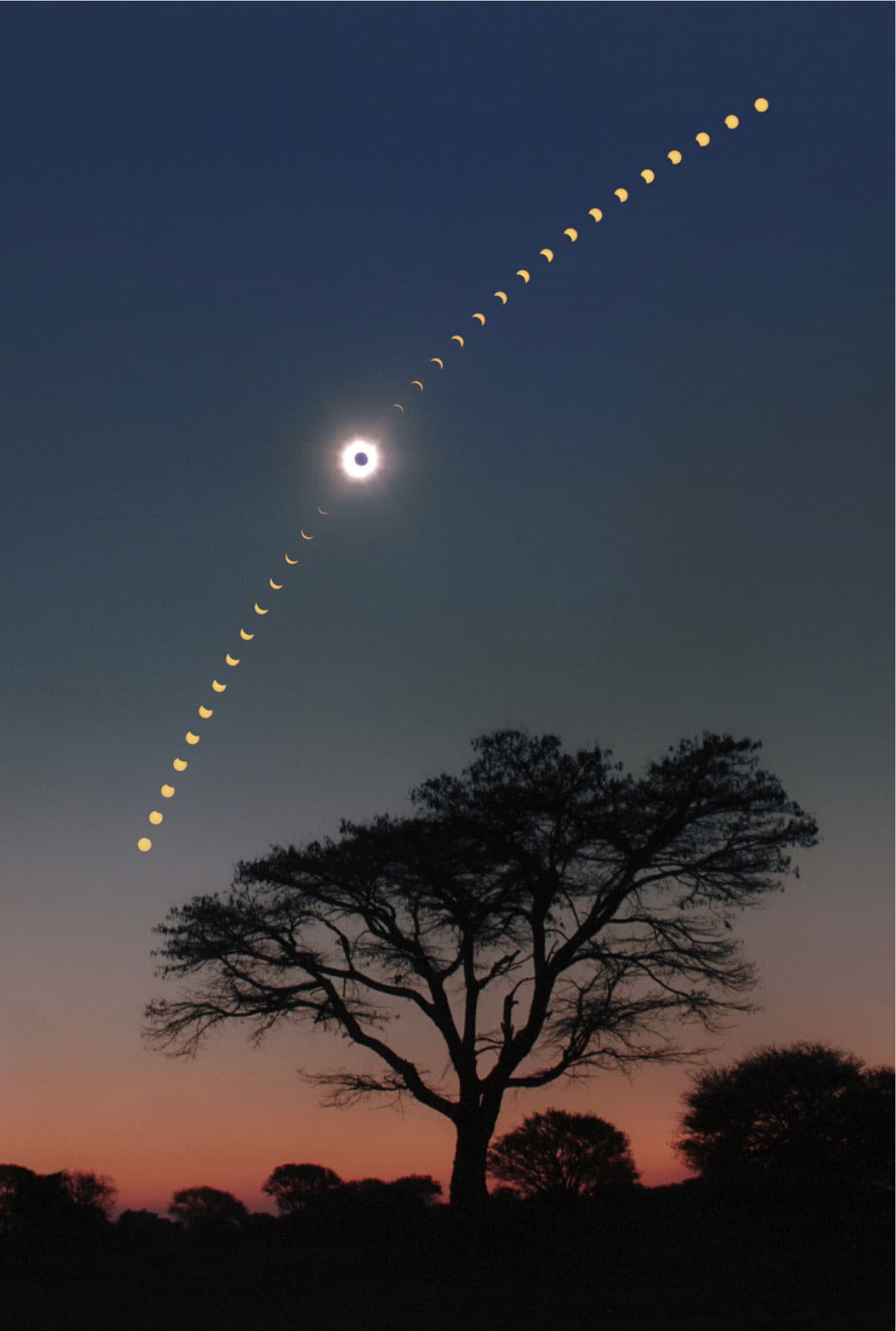INTRODUCTION
This world-exclusive night-sky collection is the work of an elite team of highly accomplished photographers from twenty countries. Between them, over the years, they have spent thousands of nights beneath the stars, recording nightscape scenes that are often missed by the rest of the world. This most diverse, carefully curated selection of images transports you to six continents, forty countries, and some of the most remote corners of the planet. Readers can enjoy these true nightscape photographs in the knowledge that all of the images are original and were made in accordance with the rules of documentary photography, which excludes the digital blending of images taken at different places or through different lenses. There are no added moons or manipulated skies! Many of the images are single-exposure captures or a series of photos stitched together to create a digital panorama. On the few occasions where a composite of various exposures has been made, and is due to technical limits or for its educational benefits, this is explained fully in the captions. The majority of images are fresh captures, taken in the last few years, but rare images of the most spectacular celestial phenomena in the past three decades also feature. These earlier photos were captured on film, as were the two accompanying this introduction.
Taking photos of the hidden Earth and the shining sky offers experiences that go beyond any technical or artistic enjoyment of photography. It builds a connecting bridge to the entire universe. I grew up in Tehran in the early 1990s and the first time I saw the moon through a small telescope, at the age of thirteen, it changed my life. Not long after, photographing nightscapes became my passion. Packing a simple, manual, film camera I would travel to villages in Iran, away from city lights, with Oshin Zakarian, a contributor to this book. The celestial views reminded us of our planet’s cosmic standpoint, but also revealed how the night sky embraces the entire Earth – a uniting roof above all of us. In June 2001, I travelled to Africa to photograph the southern sky and a total solar eclipse. My companions were the German-French explorer couple Gernot Meiser and Pascale Demy, who explored the roads from Europe to Zambia producing a documentary on eclipse-chasing and its cultural connections. Photographers from several other nations joined us at the remote camp in Kafue National Park. One starry night, sitting around the camp fire, listening to occasional roars of faraway lions, I was struck by the diversity of our skin tones and languages, and visualized how a common passion for the night sky could bring peace and understanding between cultures.
In the following years, I met other sky photographers with the same goal, and this led to the idea of transforming our random efforts into an international programme with a global voice. It finally became real when Astronomers Without Borders (AWB) was founded in 2006, by my colleague Mike Simmons. This US-based, nonprofit organization brings people together through their common interest in astronomy. The first programme in the AWB was to establish my brainchild idea of The World at Night, or TWAN, project in 2007. A dream team quickly formed and, two years later, UNESCO and the International Astronomical Union designated TWAN as the first special project for the International Year of Astronomy 2009. This recognition paved the way for a programme of exhibitions and public talks across the world. Today, the TWAN team continues to produce new images and to share its members’ visual stories with the public. The World at Night images reach millions of people worldwide, allowing them to reclaim a night sky that most modern people have lost. It is work that calls to mind the beauty of the universe and human life on our planet. This neglected element of our lives can be reintroduced by better knowing the light pollution and how we can control it. It’s been an amazing journey to establish this group that has now set a world standard for nightscape photography.
SEE MORE OF THE WORLD AT NIGHT PHOTOGRAPHY AT WWW.TWANIGHT.ORG @TWANIGHT

Arches National Park, Utah USA
A single exposure of 3 hours on film captured stars of Orion (the Hunter) and Canis Major (the Big Dog) trailing above a beautiful sandstone arch, representing a natural window to the sky. A bright short meteor is captured at top right. The pink trail in the middle is the Orion Nebula.

Chisamba ZAMBIA
Two side-by-side cameras were used to create this dramatic multi-exposure composite of the June 2001 total solar eclipse above Chisamba, Zambia. One camera captured totality and a thorn acacia tree while the second camera recorded the partial phases at 5 minute intervals through a solar filter.